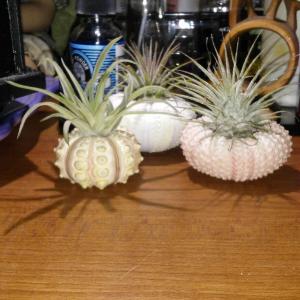文章
Dummer. ゛☀
2017年07月16日

Family - Orobanchaceae
Stems - Parasitic on roots of other vascular plants, herbaceous, achlorophyllous, subterranean, thin, glabrous.
Leaves - Alternate, few, reduced to scales, whitish-tan, 2-3mm long, glabrous, ovate.
Inflorescence - Solitary flower on axillary pedicel to 15cm long. Pedicel glandular pubescent, erect.

Flower - Corolla typically white, tubular, 2.2cm long, dense glandular pubescent, 5-lobed. Lobes to 6mm long, 4.5mm broad, with two yellow bearded strips alternating with two bottom lobes. Stamens 4, adnate at base of corolla tube, alternating with lobes. Filaments white, glabrous, to +4mm long. Anthers pale yellow, 1.1mm long. Style 7-8mm long, glabrous, tubular, expanded at apex. Stigma two lobed. Calyx tube campanulate, 5-lobed. Tube to 4mm long, 5-6mm in diameter, dense glandular pubescent. Lobes attenuate, to 5mm long, glandular pubescent.
Flowering - April - June.
Habitat - Wooded slopes, rocky open woods, rocky glades, base of bluffs.
Origin - Native to U.S.
Other info. - I like the parasitic plants and this plant is no exception. It's a small plant but easy to find because of the fairly large white flower. The big tubular corolla with the yellow bearded strips is just screaming to be visited by a bee or small wasp. The stems are short and thin and rarely seen unless you dig a bit at the base of the pedicel.
Stems - Parasitic on roots of other vascular plants, herbaceous, achlorophyllous, subterranean, thin, glabrous.

Leaves - Alternate, few, reduced to scales, whitish-tan, 2-3mm long, glabrous, ovate.
Inflorescence - Solitary flower on axillary pedicel to 15cm long. Pedicel glandular pubescent, erect.

Flower - Corolla typically white, tubular, 2.2cm long, dense glandular pubescent, 5-lobed. Lobes to 6mm long, 4.5mm broad, with two yellow bearded strips alternating with two bottom lobes. Stamens 4, adnate at base of corolla tube, alternating with lobes. Filaments white, glabrous, to +4mm long. Anthers pale yellow, 1.1mm long. Style 7-8mm long, glabrous, tubular, expanded at apex. Stigma two lobed. Calyx tube campanulate, 5-lobed. Tube to 4mm long, 5-6mm in diameter, dense glandular pubescent. Lobes attenuate, to 5mm long, glandular pubescent.

Flowering - April - June.
Habitat - Wooded slopes, rocky open woods, rocky glades, base of bluffs.
Origin - Native to U.S.
Other info. - I like the parasitic plants and this plant is no exception. It's a small plant but easy to find because of the fairly large white flower. The big tubular corolla with the yellow bearded strips is just screaming to be visited by a bee or small wasp. The stems are short and thin and rarely seen unless you dig a bit at the base of the pedicel.
0
0
文章
Dummer. ゛☀
2017年07月16日

Family - Brassicaceae
Stems - Plants mostly acaulescent, from a taproot. Scapes to +10cm long in fruit, glabrous, erect, herbaceous, multiple from the base.

Leaves - In a basal rosette, petiolate, to +5cm long, +/-1.4cm broad, glabrous. Blades deeply pinnatifid. Divisions acute, each typically with 2 or more lateral lobes. Terminal division the largest, typically 5-lobed. Leaf tissue at base of divisions tapering up the rachis and ending just before the next leaf division.
Inflorescence - Single flower terminating each scape.

Flowers - Petals 4, white with yellow at base, clawed, glabrous. Claw to 2mm long. Limb 5mm long, 3mm broad, rounded to blunt at the apex. Stamens 6, didynamous(4 & 2), erect. Filaments to 5.5mm long, white, glabrous. Anthers pale yellow, 1mm long. Ovary green, cylindric, glabrous, 2-valved, 4.5mm long, 1mm in diameter. Style short and thick, -1mm long. Sepals 4, erect, whitish-green or with a pinkish-red tinge(especially at the apex), acute, entire, linear-oblong, glabrous, gibbous at base, 4.5mm long, 1.5mm broad. Siliques to 2.5cm long, glabrous, slightly compressed, beaked. Beak to 2mm long. Seeds many.
Flowering - March - April.

Habitat - Limestone glades and bald knobs.
Origin - Native to U.S.
Other info. - This is a neat little plant which can be found in the Ozark region of Missouri. The plant has a short growing season but is striking when in flower. It would make a good rock garden specimen and grows well from seed. This species is easily identified in the field by its pinnatifid leaves and big (for the size of the plant) flowers.
Stems - Plants mostly acaulescent, from a taproot. Scapes to +10cm long in fruit, glabrous, erect, herbaceous, multiple from the base.

Leaves - In a basal rosette, petiolate, to +5cm long, +/-1.4cm broad, glabrous. Blades deeply pinnatifid. Divisions acute, each typically with 2 or more lateral lobes. Terminal division the largest, typically 5-lobed. Leaf tissue at base of divisions tapering up the rachis and ending just before the next leaf division.
Inflorescence - Single flower terminating each scape.

Flowers - Petals 4, white with yellow at base, clawed, glabrous. Claw to 2mm long. Limb 5mm long, 3mm broad, rounded to blunt at the apex. Stamens 6, didynamous(4 & 2), erect. Filaments to 5.5mm long, white, glabrous. Anthers pale yellow, 1mm long. Ovary green, cylindric, glabrous, 2-valved, 4.5mm long, 1mm in diameter. Style short and thick, -1mm long. Sepals 4, erect, whitish-green or with a pinkish-red tinge(especially at the apex), acute, entire, linear-oblong, glabrous, gibbous at base, 4.5mm long, 1.5mm broad. Siliques to 2.5cm long, glabrous, slightly compressed, beaked. Beak to 2mm long. Seeds many.
Flowering - March - April.

Habitat - Limestone glades and bald knobs.
Origin - Native to U.S.
Other info. - This is a neat little plant which can be found in the Ozark region of Missouri. The plant has a short growing season but is striking when in flower. It would make a good rock garden specimen and grows well from seed. This species is easily identified in the field by its pinnatifid leaves and big (for the size of the plant) flowers.
0
0
文章
Dummer. ゛☀
2017年07月15日

Family - Rosaceae
Stems - Acaulescent. Leaves and inflorescences from short crown. Plants stoloniferous and rhizomatous.

Leaves - Basal, trifoliolate, petiolate, stipulate. Stipules acute, 2cm long, 5-6mm broad, glabrous except for villous midvein. Petioles to +16cm long, pilose or with appressed pubescence. Leaflets lance-ovate to obovate, glabrous above, sericeous below, to -5cm long, +/-2.6cm broad, serrate-dentate on upper portion of margins, entire near base. Terminal leaflet on slightly longer petiolule than lateral leaflets. Lateral leaflets oblique at base.
Inflorescence - Open corymbiform cluster. Peduncle to 15cm long, pilose. Pedicels pilose or with appressed pubescence, to 1.3cm long.

Flowers - Petals 5, white, to 8mm long, 5.5mm broad, glabrous, orbicular to broadly obovate, spreading. Stamens many(+20), borne at edge of receptacle. Filaments 1.5mm long, yellow, glabrous. Anthers yellow. Pistils many. Hypanthium broadly conic, 2mm tall(long). sericeous. Bracts 5, linear, to +/-5mm long, 1.2mm broad, sericeous, alternating with sepals. Sepals acuminate, +/-5mm long, 2.2mm broad at base, sericeous. Fruit red, accessory, with many small achenes on surface, to +/-1.5cm long, a strawberry for goodness sakes.
Flowering - April - May.

Habitat - Open slopes, prairies, rocky open ground, open woods, railroads.
Origin - Native to U.S.
Other info. - What else can I say? It's a strawberry plant, plain and simple. The strawberries you buy in the store, (F. x ananassa), are hybrids of this species and F. chiloensis (L.) Duchn. from Europe. The European strawberries have the size but no flavor and our plants have the taste but no size. The hybrid typically has both.
F. virginiana has smaller flowers than the hybrid plants, which occasionally escape cultivation in our area. The leaves of F. virginiana are typically trifoliolate but sometimes have a an extra pair of reduced leaflets also.
Stems - Acaulescent. Leaves and inflorescences from short crown. Plants stoloniferous and rhizomatous.

Leaves - Basal, trifoliolate, petiolate, stipulate. Stipules acute, 2cm long, 5-6mm broad, glabrous except for villous midvein. Petioles to +16cm long, pilose or with appressed pubescence. Leaflets lance-ovate to obovate, glabrous above, sericeous below, to -5cm long, +/-2.6cm broad, serrate-dentate on upper portion of margins, entire near base. Terminal leaflet on slightly longer petiolule than lateral leaflets. Lateral leaflets oblique at base.
Inflorescence - Open corymbiform cluster. Peduncle to 15cm long, pilose. Pedicels pilose or with appressed pubescence, to 1.3cm long.

Flowers - Petals 5, white, to 8mm long, 5.5mm broad, glabrous, orbicular to broadly obovate, spreading. Stamens many(+20), borne at edge of receptacle. Filaments 1.5mm long, yellow, glabrous. Anthers yellow. Pistils many. Hypanthium broadly conic, 2mm tall(long). sericeous. Bracts 5, linear, to +/-5mm long, 1.2mm broad, sericeous, alternating with sepals. Sepals acuminate, +/-5mm long, 2.2mm broad at base, sericeous. Fruit red, accessory, with many small achenes on surface, to +/-1.5cm long, a strawberry for goodness sakes.
Flowering - April - May.

Habitat - Open slopes, prairies, rocky open ground, open woods, railroads.
Origin - Native to U.S.
Other info. - What else can I say? It's a strawberry plant, plain and simple. The strawberries you buy in the store, (F. x ananassa), are hybrids of this species and F. chiloensis (L.) Duchn. from Europe. The European strawberries have the size but no flavor and our plants have the taste but no size. The hybrid typically has both.
F. virginiana has smaller flowers than the hybrid plants, which occasionally escape cultivation in our area. The leaves of F. virginiana are typically trifoliolate but sometimes have a an extra pair of reduced leaflets also.
0
0
文章
Dummer. ゛☀
2017年07月15日

Family - Liliaceae
Stems - Ariel stems to +15cm tall, glabrous, erect, herbaceous, simple, from bulblike corm.
Leaves - Two per flowering plant, one in non-flowering plants, linear-elliptic to oblanceolate, entire, acute, glabrous, green and glaucous below, mottled with purple above, to 4cm broad, +/-10cm long.
Inflorescence - Single nodding flower terminating aerial stem.
Flower - Petals and sepals white internally, typically with lilac tinge externally, reflexed when mature, linear-oblong, entire, 6mm broad, +3cm long, glabrous. Stamens 6, adnate to base of petals and sepals, erect, exserted. Filaments flattened, +1mm broad. Anthers yellow, 6mm long. Style white, to 1.5cm long, exserted. Stigmas 3, to 3mm long. Ovary superior, 3-locular, ovules many. Fruit to 2.5cm long, weekly 3-angled, glabrous.
Flowering - March - May.
Habitat - Low woods, wooded slopes, ravines.
Origin - Native to U.S.
Other info. - The leaves of this small lily can be variable. Some leaves have heavy dark mottling, others have faint to no mottling. The leaves, however, are usually always glaucous below.
This plant is quite common in most of the state but is more frequent below the Missouri river. It grows in shaded areas of the habitats mentioned above. The species is a good indicator that spring is arriving, being one of the first plants to bloom. Non-flowering plants can be found in large colonies and have a single leaf.
Stems - Ariel stems to +15cm tall, glabrous, erect, herbaceous, simple, from bulblike corm.

Leaves - Two per flowering plant, one in non-flowering plants, linear-elliptic to oblanceolate, entire, acute, glabrous, green and glaucous below, mottled with purple above, to 4cm broad, +/-10cm long.
Inflorescence - Single nodding flower terminating aerial stem.

Flower - Petals and sepals white internally, typically with lilac tinge externally, reflexed when mature, linear-oblong, entire, 6mm broad, +3cm long, glabrous. Stamens 6, adnate to base of petals and sepals, erect, exserted. Filaments flattened, +1mm broad. Anthers yellow, 6mm long. Style white, to 1.5cm long, exserted. Stigmas 3, to 3mm long. Ovary superior, 3-locular, ovules many. Fruit to 2.5cm long, weekly 3-angled, glabrous.
Flowering - March - May.

Habitat - Low woods, wooded slopes, ravines.
Origin - Native to U.S.
Other info. - The leaves of this small lily can be variable. Some leaves have heavy dark mottling, others have faint to no mottling. The leaves, however, are usually always glaucous below.
This plant is quite common in most of the state but is more frequent below the Missouri river. It grows in shaded areas of the habitats mentioned above. The species is a good indicator that spring is arriving, being one of the first plants to bloom. Non-flowering plants can be found in large colonies and have a single leaf.
0
0
求助
Ueca
2017年07月15日

What are these succulent species? I am especially interested in the Gasteria-like plants.
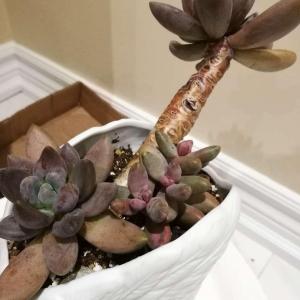
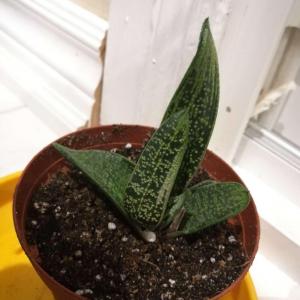
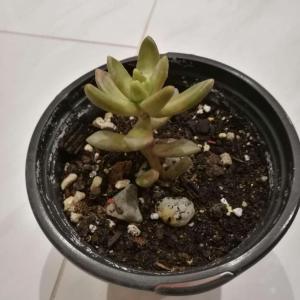

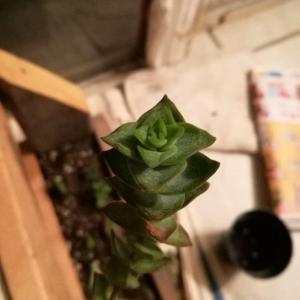

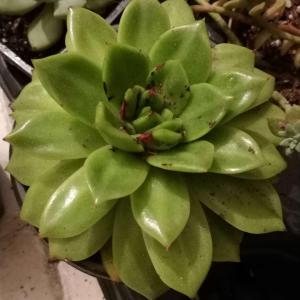
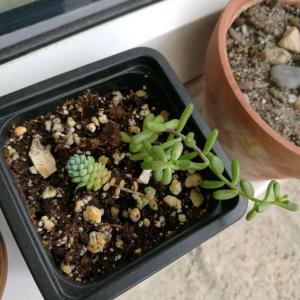
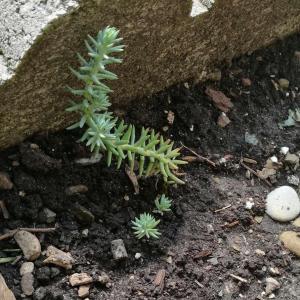









1
0
Abby Gill:The first and third are probably pachyphytum, the second one maybe haworthia, the fourth one echeveria lola, the seventh a type of echeveria, and the last one some kind of sedum. I'm not 100% sure though.
meriunkat:the second picture on the last row had a small sedum Morganianum "donkey tail"
文章
Dummer. ゛☀
2017年07月14日

Family - Fabaceae
Stems - Multiple from base, from a taproot and branched caudex, ascending to erect, branching, herbaceous, glabrescent below, with antrorse appressed hairs above,(more dense in young plants), often reddish, to 50cm tall.
Leaves - Alternate, odd-pinnate, stipulate. Stipules to 1cm long, 5mm broad at base, with scarious margins, acute to acuminate, glabrous but with papillate margins. Leaflets opposite to subopposite, +/-10 pairs per leaf, to 1.5cm long, 7-8mm broad, rounded at apex, oblong to oblong-ovate, entire but with cilia on margins, glabrous above, sericeous below, with short petiolules. Petiolules to 1mm long, pilose.
Inflorescence - Axillary long-pedunculate racemes. Peduncles to +/-7cm long, sericeous. Pedicels to 2mm long, densely sericeous to appressed pubescent. Raceme to +/-5cm long(tall). Each flower subtended by a minute lanceolate bract. Bracts to 3mm long, 1mm broad at base, with green midvein.
Flowers - Corolla papilionaceous, creamy white. Standard to 1.9cm long, 8mm broad at apex, glabrous. Keels apically connate and purplish at apex, folded around style and stamens. Stamens diadelphous. Filaments glabrous, white, to 1.3cm long. Anthers orange-red, .7mm long. Ovary green, 3-4mm long, terete, glabrous. Style greenish white, 1.1cm long, apically curved upward, glabrous. Calyx creamy white to yellowish-green, 1cm long, 3-4mm in diameter, tomentose externally, glabrous internally, 5-toothed. Teeth to -2mm long, acute, unequal. Top 2 teeth more triangular then the lower 3. Fruits plump, +/-2cm in diameter, subglobose, reddish-purple when ripe, glabrous.
Flowering - March - May.
Habitat - Rocky open woods, glades, bluffs, rocky prairies.
Origin - Native to U.S.
Other info. - This is an attractive species which can be found in the lower 2/3 of the state. The plant prefers dry open areas. It should be cultivated more frequently. This species is easy to ID while in flower because of its tomentose calices, whitish flowers, and plumlike fruits. The fruits of this species can be eaten raw or cooked while green and unripe.
Our plants belong to variety trichocalyx (Nutt.) Fern.
A synonym for this species is A. crassicarpus var. trichocalyx (Nutt.) Barneby.
Stems - Multiple from base, from a taproot and branched caudex, ascending to erect, branching, herbaceous, glabrescent below, with antrorse appressed hairs above,(more dense in young plants), often reddish, to 50cm tall.

Leaves - Alternate, odd-pinnate, stipulate. Stipules to 1cm long, 5mm broad at base, with scarious margins, acute to acuminate, glabrous but with papillate margins. Leaflets opposite to subopposite, +/-10 pairs per leaf, to 1.5cm long, 7-8mm broad, rounded at apex, oblong to oblong-ovate, entire but with cilia on margins, glabrous above, sericeous below, with short petiolules. Petiolules to 1mm long, pilose.
Inflorescence - Axillary long-pedunculate racemes. Peduncles to +/-7cm long, sericeous. Pedicels to 2mm long, densely sericeous to appressed pubescent. Raceme to +/-5cm long(tall). Each flower subtended by a minute lanceolate bract. Bracts to 3mm long, 1mm broad at base, with green midvein.
Flowers - Corolla papilionaceous, creamy white. Standard to 1.9cm long, 8mm broad at apex, glabrous. Keels apically connate and purplish at apex, folded around style and stamens. Stamens diadelphous. Filaments glabrous, white, to 1.3cm long. Anthers orange-red, .7mm long. Ovary green, 3-4mm long, terete, glabrous. Style greenish white, 1.1cm long, apically curved upward, glabrous. Calyx creamy white to yellowish-green, 1cm long, 3-4mm in diameter, tomentose externally, glabrous internally, 5-toothed. Teeth to -2mm long, acute, unequal. Top 2 teeth more triangular then the lower 3. Fruits plump, +/-2cm in diameter, subglobose, reddish-purple when ripe, glabrous.

Flowering - March - May.
Habitat - Rocky open woods, glades, bluffs, rocky prairies.
Origin - Native to U.S.
Other info. - This is an attractive species which can be found in the lower 2/3 of the state. The plant prefers dry open areas. It should be cultivated more frequently. This species is easy to ID while in flower because of its tomentose calices, whitish flowers, and plumlike fruits. The fruits of this species can be eaten raw or cooked while green and unripe.
Our plants belong to variety trichocalyx (Nutt.) Fern.
A synonym for this species is A. crassicarpus var. trichocalyx (Nutt.) Barneby.
0
0
Ueca
2017年07月09日

What do you think about lichens (地衣)? Are they useful? Are they pests? Should I keep them around?
Lichens are a combination of fungus and algae. They are self-sufficient and occupy spaces that are not used by other plants. They seem to respond poorly to acute conditional changes, and will die out if something is not right, similar to moss.


Lichens are a combination of fungus and algae. They are self-sufficient and occupy spaces that are not used by other plants. They seem to respond poorly to acute conditional changes, and will die out if something is not right, similar to moss.


0
0
meriunkat
2017年07月07日

#Graptosedum Francesco Baldi #Graptopetalum Paraguayense
Saying goodbye to these plants
A gift to a loving friend💚


Saying goodbye to these plants
A gift to a loving friend💚


2
0
文章
linpei
2017年07月04日

Lotus flowers are beautiful aquatic plants that represent beauty and purity, and they are available in a range of sizes and colors. The most common colors are red, pink, yellow, and white. The plants can be grown from seeds or tubers, but seeds will not produce a flower the first year while they develop into tubers.
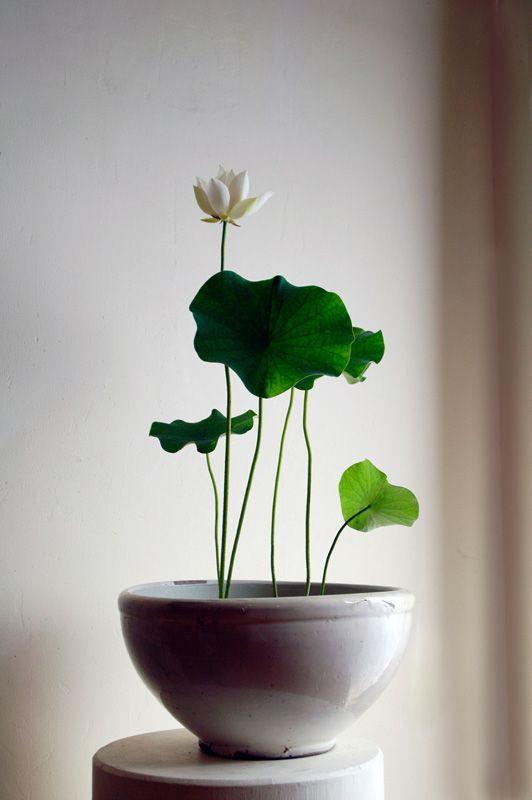
1.Growing from Seed
Scar the seeds. File the pointed tip of the seed down to one layer using a standard metal file. If you do not scar the seed, it will not grow and may rot.
2.Place the seeds into a glass of warm water. The water should not be chlorinated and must be changed every day until the lotus seeds sprout. After the first day of soaking, the seeds should swell to nearly twice their original size.
Seeds that float are almost always infertile. File any floating seeds down until you see a hint of the white meat on the inside of the seed. If these seeds do not swell like the others, discard them to avoid letting them cloud up the water.
3.Continue changing the water daily even after the seeds sprout. You must be more delicate than before to avoid disturbing the growth, however. Growth should start after four or five days of soaking, but you will need to wait a few more days until the seedling is at least 6 in. (15.24 cm) long before transferring.
4.Pick the right pot. A 3 to 5 gallon (11 to 19 liter) container should provide a young lotus plant with enough room to grow. A black plastic bucket works best because of its ability to retain heat and warm the seedlings. You also need to choose a bucket that does not have any drainage holes. The plant can actually gravitate toward the drainage holes and begin growing outside of them, causing the plant to under-perform.
5.Anchor the seeds. Lotus seeds without an anchor may find their way out of the soil and end up floating on the surface of the water. Gently wrap a small amount of modeling clay around each seed, but do not cover the sprout.
6.Fill your pot with dense soil. The ideal soil is about two parts clay and one part river sand. Fill the pot with about 6 in. (15.24 cm) of this potting medium.
7.Gently press the seeds into the top of the soil. The seeds should rest near the top of the soil, but you should brush a light layer of soil over the seeds after you press them in.
8.Lower the pot into shallow water. The water should be a maximum of 18 in. (45.72 cm) deep and at a temperature of 70 degrees Fahrenheit (21.1 degrees Celsius).

1.Growing from Seed
Scar the seeds. File the pointed tip of the seed down to one layer using a standard metal file. If you do not scar the seed, it will not grow and may rot.
2.Place the seeds into a glass of warm water. The water should not be chlorinated and must be changed every day until the lotus seeds sprout. After the first day of soaking, the seeds should swell to nearly twice their original size.
Seeds that float are almost always infertile. File any floating seeds down until you see a hint of the white meat on the inside of the seed. If these seeds do not swell like the others, discard them to avoid letting them cloud up the water.
3.Continue changing the water daily even after the seeds sprout. You must be more delicate than before to avoid disturbing the growth, however. Growth should start after four or five days of soaking, but you will need to wait a few more days until the seedling is at least 6 in. (15.24 cm) long before transferring.
4.Pick the right pot. A 3 to 5 gallon (11 to 19 liter) container should provide a young lotus plant with enough room to grow. A black plastic bucket works best because of its ability to retain heat and warm the seedlings. You also need to choose a bucket that does not have any drainage holes. The plant can actually gravitate toward the drainage holes and begin growing outside of them, causing the plant to under-perform.
5.Anchor the seeds. Lotus seeds without an anchor may find their way out of the soil and end up floating on the surface of the water. Gently wrap a small amount of modeling clay around each seed, but do not cover the sprout.
6.Fill your pot with dense soil. The ideal soil is about two parts clay and one part river sand. Fill the pot with about 6 in. (15.24 cm) of this potting medium.
7.Gently press the seeds into the top of the soil. The seeds should rest near the top of the soil, but you should brush a light layer of soil over the seeds after you press them in.
8.Lower the pot into shallow water. The water should be a maximum of 18 in. (45.72 cm) deep and at a temperature of 70 degrees Fahrenheit (21.1 degrees Celsius).
6
7
求助
khaki83
2017年07月02日

I know these plants have blue dusting but I touched their leaves way too much and it's lost most of the blue colour, would it ever return blue again?




2
0
khaki83:@Abby Gill thank you so much Abby :) Will be interesting to see. bought this over a month a go now. no development yet
Abby Gill:The powdery substance that makes the plant appear blue is a wax-like material produced by the plant as a sort of homemade sunblock. Succulents were, in the beginning, found in deserts, so many evolved to create this material to protect it from the harsh heat and sunlight. So yes, the blue color will return. Based on the species of your succulent it may either take a few hours to a few days to return. It also depends on the plant's environment and health so don't take my word; it may take weeks. The succulent will most likely be fine during the time without the wax, but I'd refrain from touching the leaves too much in the future. Hope this helped. 🌵🌱💚
sarajordan2993:its beautiful !
khaki83:ah good to know! thank you so much :)
meriunkat:yes over the time it comes back, just takes a while. I have a succulent that also turns blue with the powdery look and I've touched the petals accidentally taking away the blue powder and it came back after some weeks.
文章
Dummer. ゛☀
2017年07月02日

The growth habit of Sandersonia.
Palace lantern lily, itself is temperate plants in the breeding time, suitable for the growth of temperature is 12 DEG C to 28 degrees Celsius, that summer temperature is not too high.
When breeding Sandersonia, water amount, and there are certain laws, and to maintain ventilation.
Morphological characteristics
Sandersonia plants for semi vine, about 1 meters high. Impeller alternate, glossy, willow shaped, ca. 5-10 cm wide, ca. 2-3 cm wide, with 3 deep lines, sessile. Impeller alternate, glossy, willow shaped, ca. 5-10 cm wide, ca. 2-3 cm wide, with 3 deep lines, sessile. Flowers are like small lanterns, large wide narrow, ca. 2 cm, with a long handle, about 5 cm long, flowering, flower is singular when midsummer to autumn and winter, rare. A cool climate, which is planted in cold climates at high altitudes in summer。
Habitat
Originating in the Western Asia, have spread throughout the distribution range of grassland and forest edge, Cape Province, Kwazulu - Natal, Swaziland and the southern province of Mpumalanga is a common plant in eastern South Africa, but due to the excessive expansion of agriculture and picking flowers, serious loss of habitat, the flowers become rare only the scene, usually found in the nature reserve in the wild flowers today.



Palace lantern lily, itself is temperate plants in the breeding time, suitable for the growth of temperature is 12 DEG C to 28 degrees Celsius, that summer temperature is not too high.
When breeding Sandersonia, water amount, and there are certain laws, and to maintain ventilation.
Morphological characteristics
Sandersonia plants for semi vine, about 1 meters high. Impeller alternate, glossy, willow shaped, ca. 5-10 cm wide, ca. 2-3 cm wide, with 3 deep lines, sessile. Impeller alternate, glossy, willow shaped, ca. 5-10 cm wide, ca. 2-3 cm wide, with 3 deep lines, sessile. Flowers are like small lanterns, large wide narrow, ca. 2 cm, with a long handle, about 5 cm long, flowering, flower is singular when midsummer to autumn and winter, rare. A cool climate, which is planted in cold climates at high altitudes in summer。
Habitat
Originating in the Western Asia, have spread throughout the distribution range of grassland and forest edge, Cape Province, Kwazulu - Natal, Swaziland and the southern province of Mpumalanga is a common plant in eastern South Africa, but due to the excessive expansion of agriculture and picking flowers, serious loss of habitat, the flowers become rare only the scene, usually found in the nature reserve in the wild flowers today.



0
0



